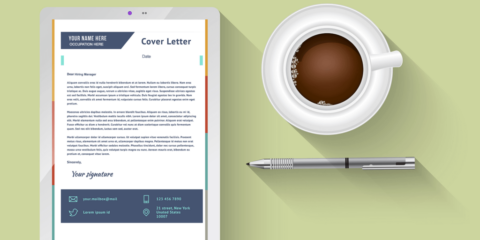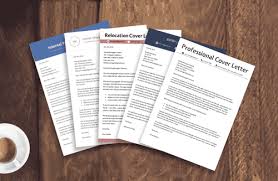Cover Letter Guide
The cover letter is one of your marketing documents (in addition to your resume) and your opportunity to bring additional focus to your resume with a specific reader in mind. You will write a unique and well-researched letter for every opportunity to which you apply. Before you begin constructing your cover letter, we encourage you to consider your lens. What we mean is that we want you to adopt the mindset, or lens, of the person who will make the hiring decision.
- What are the most important qualities needed to be successful in this role?
- What type of candidate will progress to the interview?
Many of the answers you seek are found in the job description or through a conversation with a professional who works for the organization. Use all of these resources to identify the most important messages that you need to convey about your story in the cover letter. A Cover letter is an opportunity to tell your story in a compelling way by making a claim and substantiating that claim with examples. It follows much of the same structure as an essay.
- Present a clear thesis.
- Provide evidence to support your claims.
- Bring the story to a close with a succinct and compelling conclusion.
Not sure a cover letter is necessary? Think of the cover letter as part of the resume. If someone asks for a resume, send a resume plus a cover letter, unless there is an explicit request otherwise. This is standard practice. Also, if you are applying online and have a small text box in which to provide additional information, consider this an opportunity for a mini-cover letter.
Steps to Success
Make a strong first impression in the first sentence of the first paragraph. A persuasive first sentence tells the reader that you are serious and keeps them reading. Interesting and compelling information about your candidacy should be introduced in your first paragraph. The final paragraph is too late.
Go beyond general statements that could be true for the majority of candidates. Common qualities or characteristics will not help you to uniquely stand out. Trust the resume to cover the basics and use the cover letter to highlight bigger patterns of success or share an anecdote about your achievements that relates to a requirement of the position.
Tell the reader about you. Communicate your interest and motivation to apply by connecting your background and interests to your knowledge of the organization. Avoid reporting facts. The reader already knows his or her organization but wants to know about you and why you are applying. This is a great opportunity to show your level of research on the position.
Use evidence to build credibility around every claim in your letter. The reader wants to believe you and needs detailed illustrations of your past success to do so. If you have included more than a couple of claims (two or three are sufficient) about your ability to thrive in the job, you are sacrificing depth for breadth and duplicating the work that the resume should do. Move extra information for the cover letter to the resume to improve it and trust the resume.




